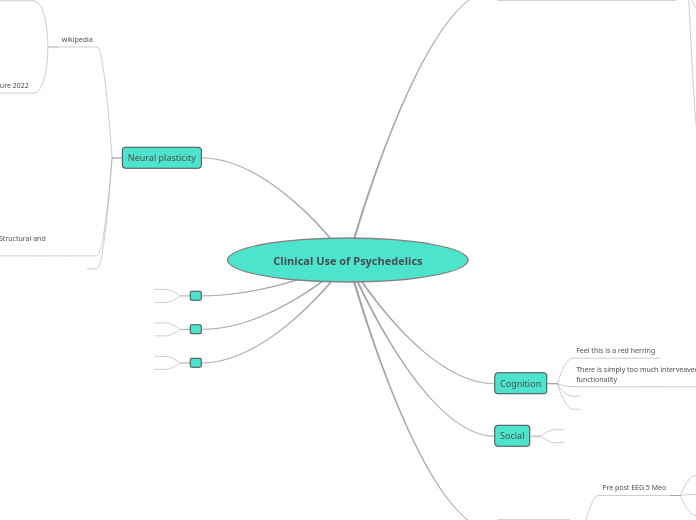によって Michael Villanueva 2年前.
180
Clinical Use of Psychedelics

によって Michael Villanueva 2年前.
180

もっと見る
Atrophy of neurons in the prefrontal cortex (PFC) plays a key role in the pathophysiology of depression and related disorders. The ability to promote both structural and functional plasticity in the PFC has been hypothesized to underlie the fast-acting antidepressant properties of the dissociative anesthetic ketamine. Here, we report that, like ketamine, serotonergic psychedelics are capable of robustly increasing neuritogenesis and/or spinogenesis both in vitro and in vivo
Induction of spine formation.
cortical neurons in vitro and in vivo by activating 5- HT2A receptors. Furthermore, we have found that many of the biochemical and behaviorl actions of psychdlcis are dependenct on the 5 ht 2a receptor interactioons with synapetic scaffolding protiens that are enriched in dendritic spine. Anti-depressansts can also induce spine formation and synarpic plasticity . This supposrts a mode;l for tx actions of delciss that point to a process that could enhncce synatoic plasticity.
Recently, we discovered and others99,100 confirmed that psychedelics can alter synaptic plasticity by enhancing dendritic spine formation on
Right Angular Gyrus
Overall, clinical and social neuroscience research lends strong support to the notion that emotion reactivity in general, particularly the sharing of another’s distress, plays a pivotal role in facilitating prosocial behaviour.
Detecting distress in others?
Early automatic component N200 which relfects empathic arousal
Empathy does not require complex cognitive capacities such as theory of mind (ToM), or a conscious awareness of one’s feelings and others’ feelings, but it does entail a basic ability to discriminate between self-generated versus externally-caused stimulation.
the recognion, acceptance and non threatening awareness of more than me?
we argue that empathy is an ability common to humans and many other animals, which has evolved primarily to support a range of prosocial behaviours, from parental care to helping
we
us
Me